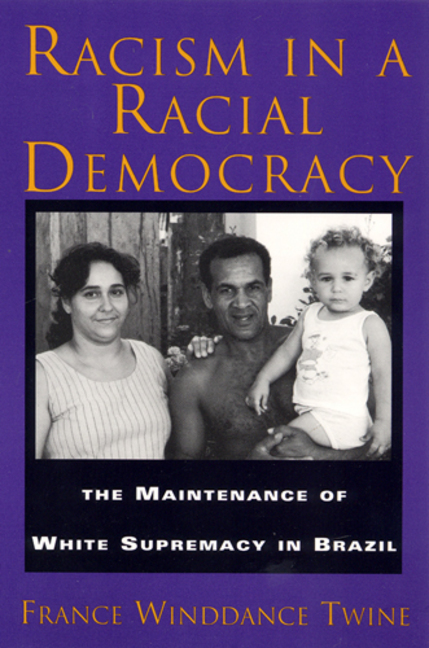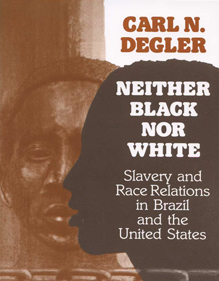The Value of Intersectional Comparative Analysis to the “Post-Racial” Future of Critical Race Theory: A Brazil-U.S. Comparative Case Study
Connecticut Law Review
Volume 43, Issue 5 (July 2011)
pages 1407-1437
Tanya Katerí Hernández, Professor of Law
Fordham University
This Commentary Article aims to illustrate the value of comparative law to the jurisprudence of Critical Race Theory (CRT), particularly with reference to the CRT project of deconstructing the mystique of “postracialism.” The central thesis of the Article is that the dangerous seductions of a U.S. ideology of “post-racialism” are more clearly identified when subject to the comparative law lens. In particular, a comparison to the Brazilian racial democracy version of “post-racialism” is an instructive platform from which to assess the advisability of promoting post-racial analyses of U.S. racial inequality. In Part I the Article introduces the value of comparative law to the future development of CRT. Part II provides an overview of Brazilian “post-racial” discourse. Part III then details the quantitative and qualitative indicators of racial discrimination and intersectional race and gender discrimination in Brazil. Part IV focuses upon the Brazilian legal opposition to post-racialism as evidenced by a recent intersectional anti-discrimination case. The Article then concludes that the critical comparative examination of the Brazilian version of “post-racialism” assists in elucidating the concrete counterintuitive harms of a “post-racial” perspective in the United States.
ARTICLE CONTENTS
- I. INTRODUCTION
- II. BRAZILIAN “POST-RACIAL” RACIAL DISCOURSE
- III. QUANTITATIVE AND QUALITATIVE INDICATORS OF DISCRIMINATION IN BRAZIL
- IV. THE INTERSECTIONAL POSITION OF AFRO-BRAZILIAN WOMEN
- V. THE INTERSECTIONAL CASE OF TIRIRICA
I. INTRODUCTION
In her article in this volume, Twenty Years of Critical Race Theory: Looking Back To Move Forward, Kimberlé Williams Crenshaw turns her attention to considering the “contemporary significance of CRT’s trajectory in light of today’s ‘post-racial’ milieu.” Post-racialism is characterized by a public policy agenda of colorblind universalism rooted in the assertion that society has transcended racism. Post-racialism incorporates colorblindness but is distinct in extending beyond the colorblindness retreat from race as primarily an aspiration for eliminating racism. In contrast, the rhetoric of post-racialism contends that racism has already been largely transcended.
In Crenshaw’s consideration of post-racialism she notes that the present challenge to Critical Race Theory (CRT) is to preclude an “overinvestment in the symbolic significance” of post-racialism as a racial frame that disregards manifestations of racial inequality in its celebration of formal equality and a colorblindness that equates the articulation of racial concerns with an act of racism. Crenshaw convincingly demonstrates the fallacy of post-racialism and the simultaneous difficulty in dispelling it, given the contemporary racial fatigue and public desire to foreclose any discussions of race. To combat the Obama mania that Crenshaw notes sanctions all talk of racism as a racial grievance itself, Crenshaw urges CRT to develop a broader project “to remap the racial contours in the way that people see the world that we live in—then in so doing . . . create a new set of possibilities for racial-justice advocates.” Crenshaw urges that the “next turn in CRT should be decidedly interdisciplinary, intersectional and cross-institutional.” In this Commentary Article, I would like to suggest that the next turn in CRT also focus more deeply on comparative law.
Because the post-racialism racial frame casts a veil which hinders the ability to see racial disparities and understand them as connected to various forms of racial discrimination, what is needed is a mechanism for refocusing the U.S. racial lens. Comparative law can make a useful contribution in the effort to refocus the racial lens. A key insight from comparative law is its “potential for sharpening, deepening and expanding the lenses through which one perceives law,” because of its ability to “challenge entrenched categorizations and fundamental assumptions in one’s own and others’ legal cultures.” Indeed, anthropologists have long noted that we cannot fully see and appreciate our own “culture” until we have compared it to that of another. A number of CRT scholars and related LatCrit [Latino Critical Race Studies] scholars have started the project of incorporating a comparative law component into CRT and the associated endeavor of applying CRT to non-U.S. legal jurisdictions. What I am underscoring in this Article is the particular usefulness that comparative law presents for the specific project of combating the post-racialism racial frame. This is because contemporary U.S. CRT scholars can only set forth conjectures about the future long-term dangers of post-racial rhetoric (such as hindering the pursuit of racial equality by shutting down any discussion of race in favor of equating racial disparities with cultural deficiencies and socio-economic disadvantages). In contrast, a comparative consideration of another region in which a form of post-racialism has long existed provides the opportunity to examine the actual adverse consequences of post-racial rhetoric.
As a vehicle for illustrating the value of comparative law to the CRT project of dismantling the post-racialism racial frame, I shall provide a comparative analysis of an instructive Brazilian intersectionality case. Because Brazil is a country that has long claimed that all racial distinctions were abandoned with the abolition of slavery, it is an instructive platform from which to assess the viability of contemporary assertions of postracialism in the United States. Yet, as shall be discussed below, growing discrimination jurisprudence in Brazil shows the longstanding post-racial assertion to be false. To the extent that a century-old claim to a form of post-racialism in Brazil is shown to be a fallacy, the many parallels that exist between Brazil and the United States enable a salient critique of U.S. post-racialism. In particular, because of their objectified and denigrated status, examining the treatment of Black women as an intersectional matter, helps to demystify the barriers to productive transnational comparisons of racial ideologies between the United States and Latin America. In order to be concrete, I shall focus on a recent intersectional discrimination case that was litigated in Brazil. But before discussing the case, it will be helpful to first explain the contours of the “post-racial” Brazilian racial ideology.
II. BRAZILIAN “POST-RACIAL” RACIAL DISCOURSE
Like the United States, Brazil is a racially diverse nation with a significant number of persons of African descent stemming from the country’s history of slavery. Yet Brazil’s involvement in the African slave trade was even longer and more intense than that of the United States. This accounts for the fact that, aside from Nigeria, Brazil is the nation with the largest number of people of African descent in the world. After emancipation, Brazil continued to be a racially divided nation, but occasionally provided social mobility for a few light-skinned mixed-race individuals. This social mobility was directly tied to the racist nationbuilding concepts of branqueamento (whitening) and mestiçagem (racial mixing/miscegenation), which can best be described as campaigns to whiten the population through a combination of European immigration incentives and the encouraging of racial mixture in order to diminish over time the visible number of persons of African decent. Indeed, the social recognition of the racially-mixed racial identity of mulato/pardo was a mechanism for buffering the numerical minority of white-identified elite Brazilians from the discontent of the vast majority of persons of African descent. Greater symbolic social status and occasional economic privilege were accorded based on one’s light skin color and approximation of a European phenotype, which simultaneously denigrated Blackness and encouraged individuals to disassociate from their African ancestry. It should be noted that in terms of concrete economic benefits, few mulattoes radically superseded the status of those Afro-descendants viewed as “Black.” Rather, the recognition of mulattoes as racially distinctive from Blacks served primarily as a kind of “psychological wage” associated with the prestige of approximating whiteness without any significant groupwide monetary benefit for such status. As a result, Brazil was able to maintain a rigid racial hierarchy that served white supremacy in a demographically-patterned society where people of African descent approximated and sometimes even outnumbered the white elite. This is in marked contrast to the demographic pattern in the United States, where, with just a few exceptions, Blacks have always been a numerical minority and have thus been more vulnerable to the white majority’s enforcement of Jim Crow racial segregation after emancipation from slavery. In Brazil, with its greater population of people of African descent, the ideological use of the “mulatto escape hatch” was such an effective tool of racial subordination that Jim Crow legal segregation was never needed and all racial justice movements were efficiently hindered. But it was the absence of Jim Crow in Brazil that later enabled the nation to promote itself as a country in which racial mixture had created a racially harmonious society. In fact, until recently, it has been a firmly entrenched notion that Brazil was a model of race relations that could be described as a “racial democracy” exemplified by racial fluidity in its racial classification practices. Hence, post-racialism in Brazil, and much of Latin America is characterized by a negation that racism exists after the abolition of slavery. The denial of racism is justified by the racial mixture of the population which has presumably “transcended” racism. Existing racial disparities are instead attributed to the cultural deficiencies and socio-economic disadvantages of Afro-Brazilians. As a result, those who raise the issue of racial discrimination are viewed as racist themselves. These facets of Brazilian post-racialism closely parallel the rhetoric of post-racialism in the United States and the related fascination with racial mixture as emblematic of racial harmony…
Read the entire article here.



